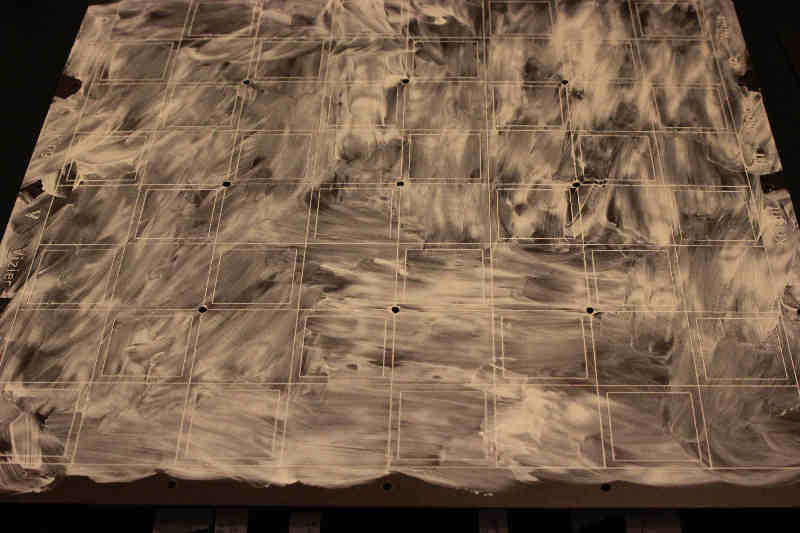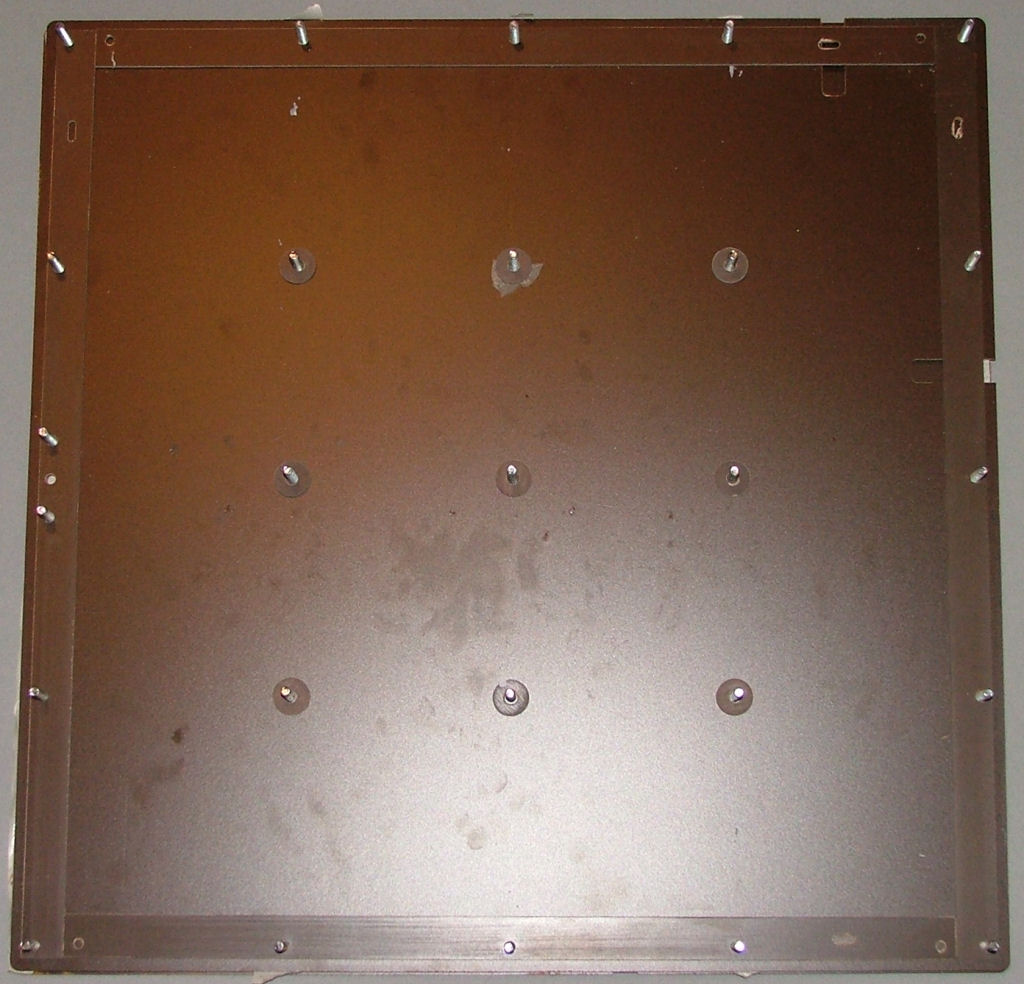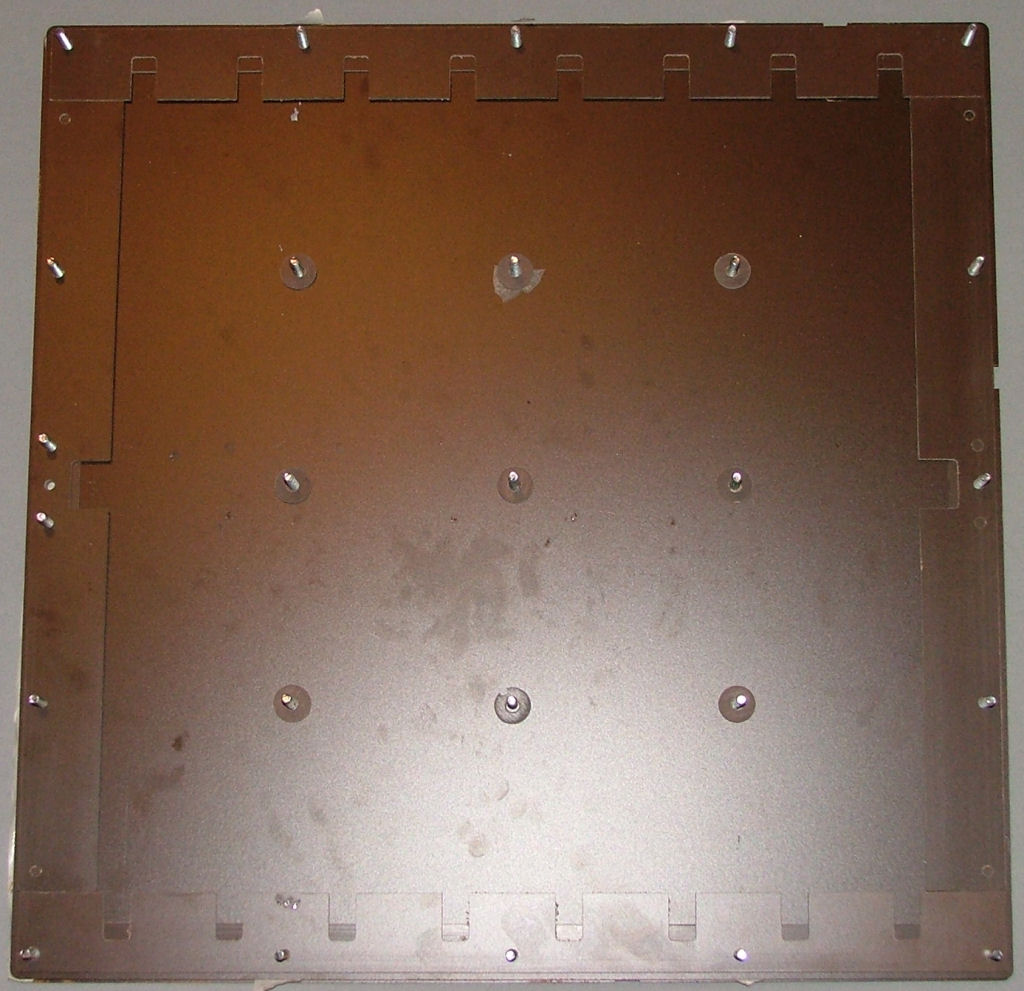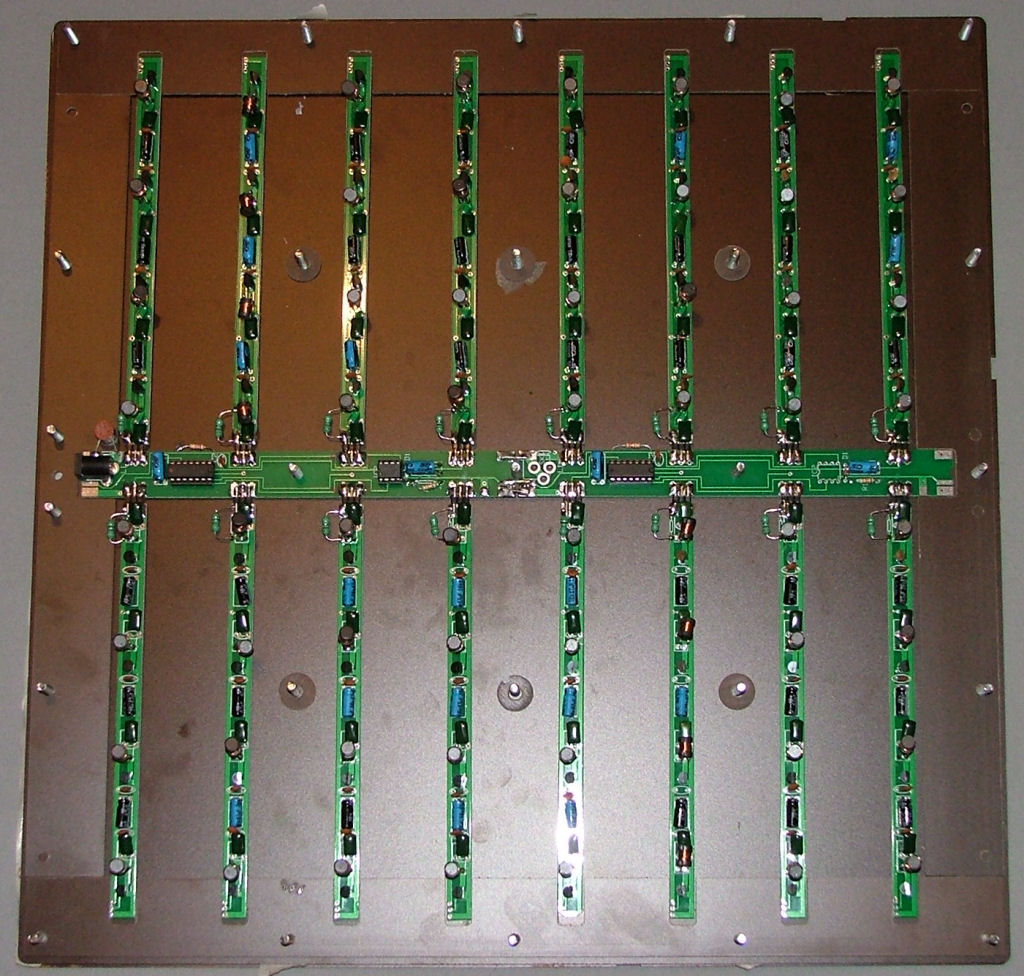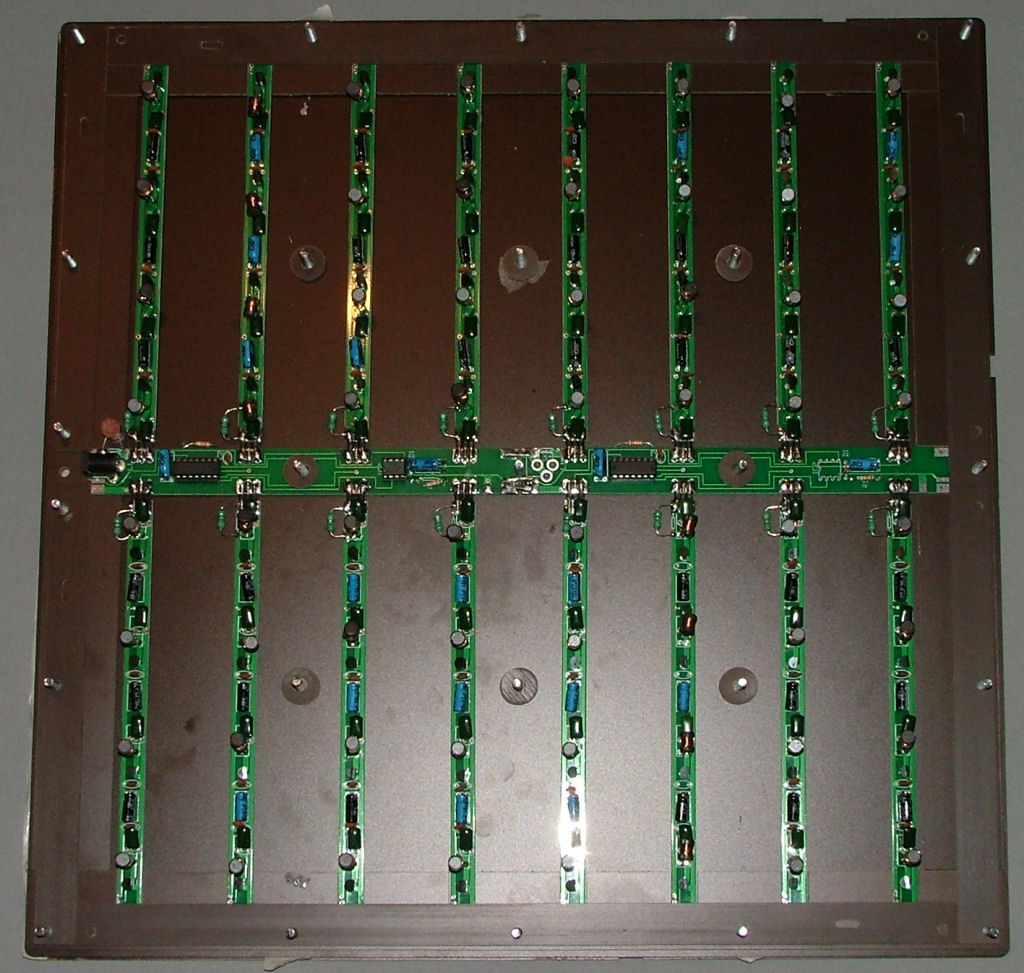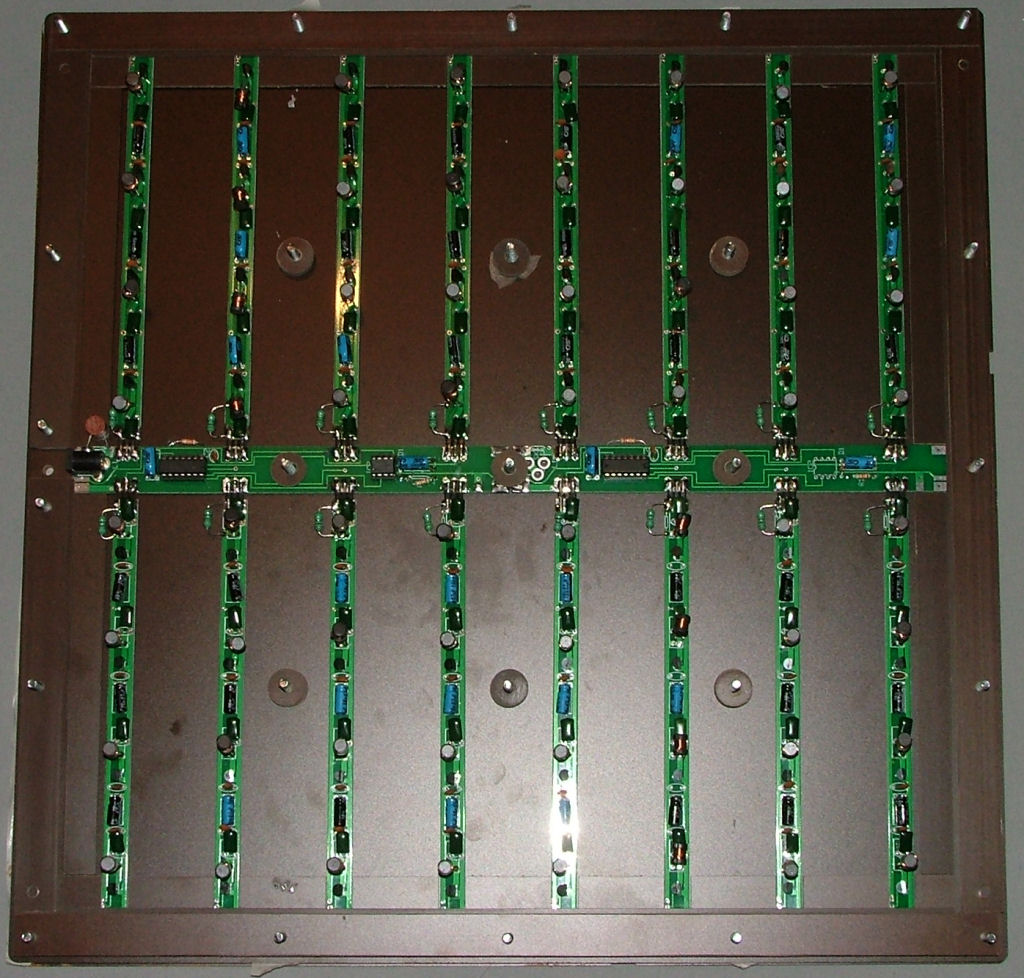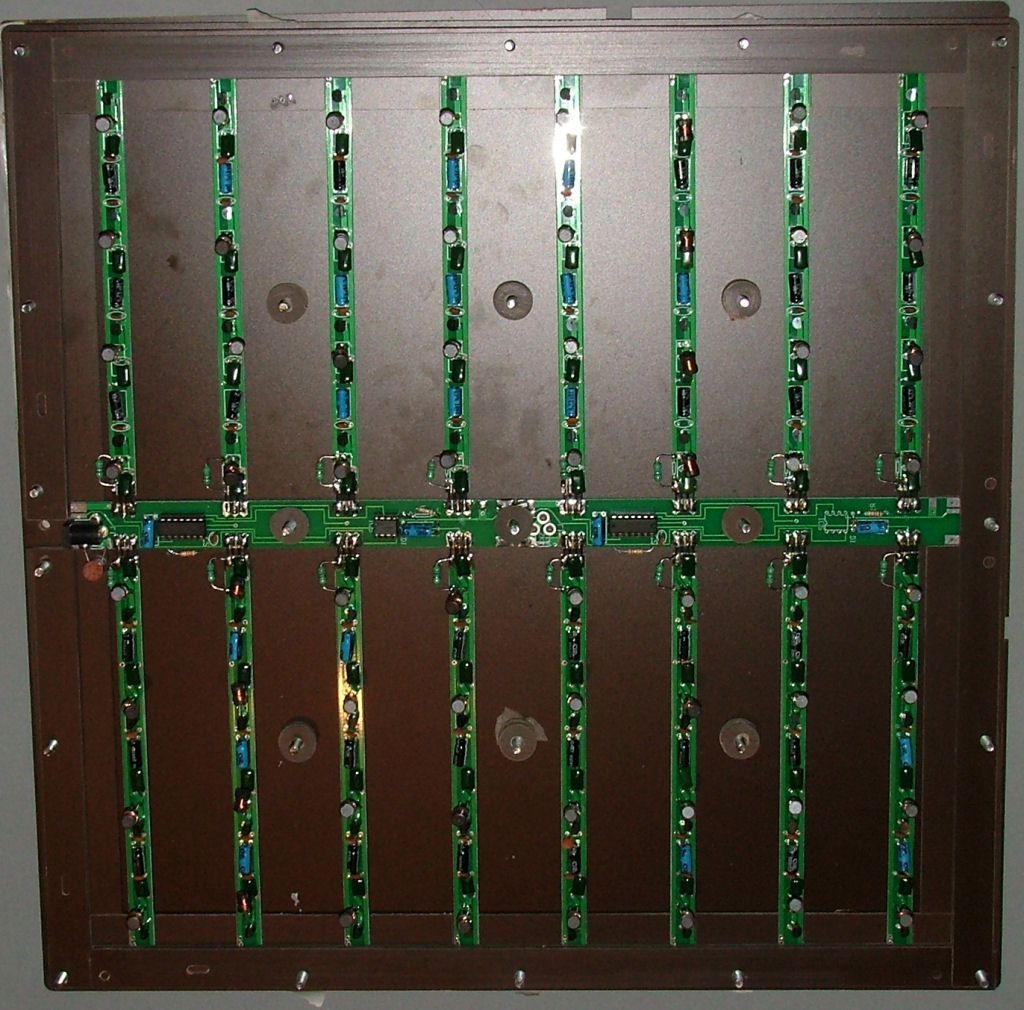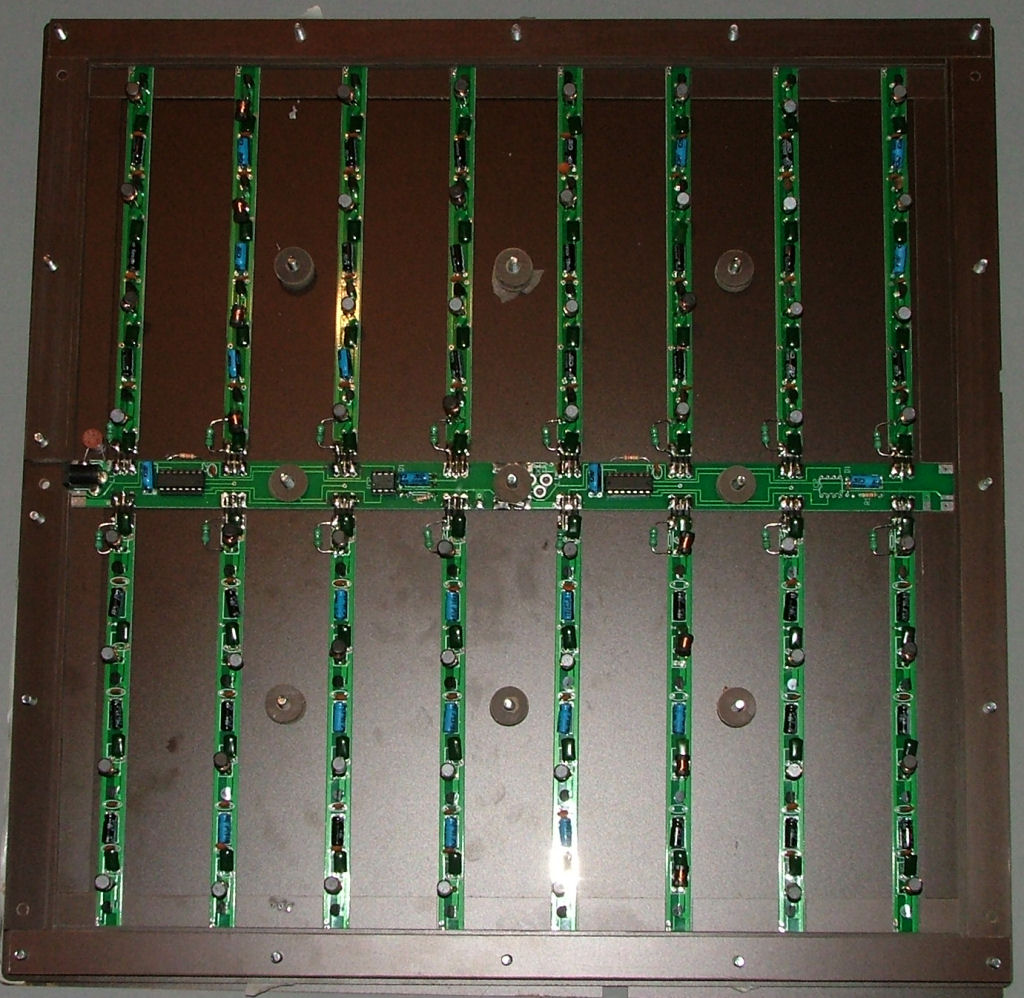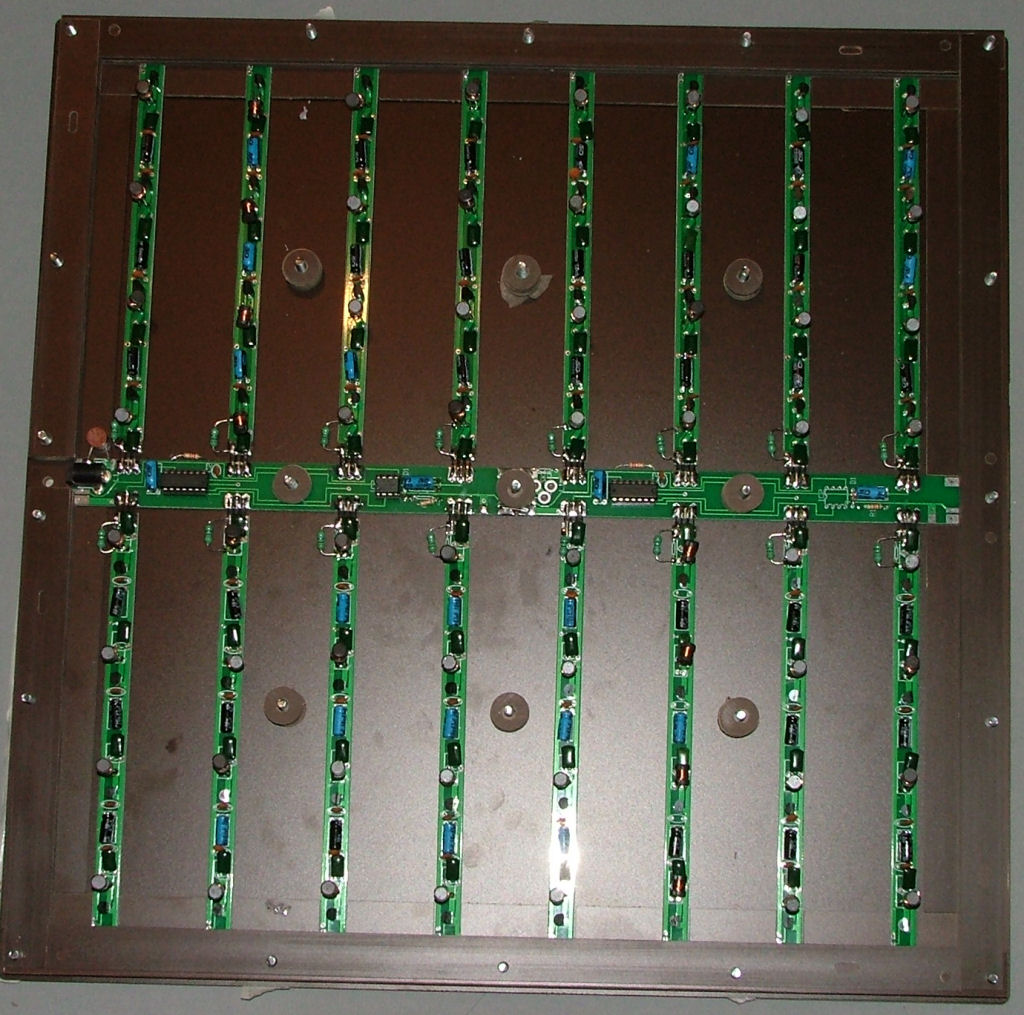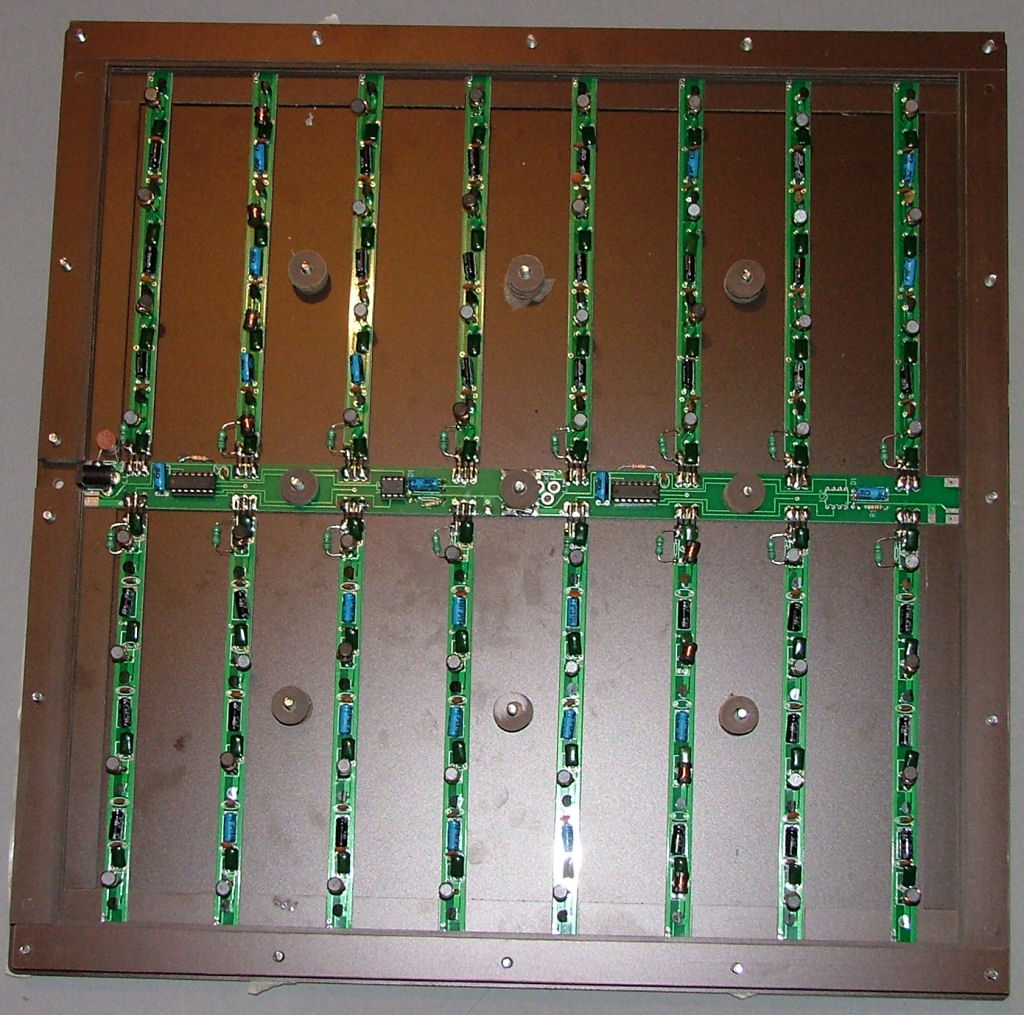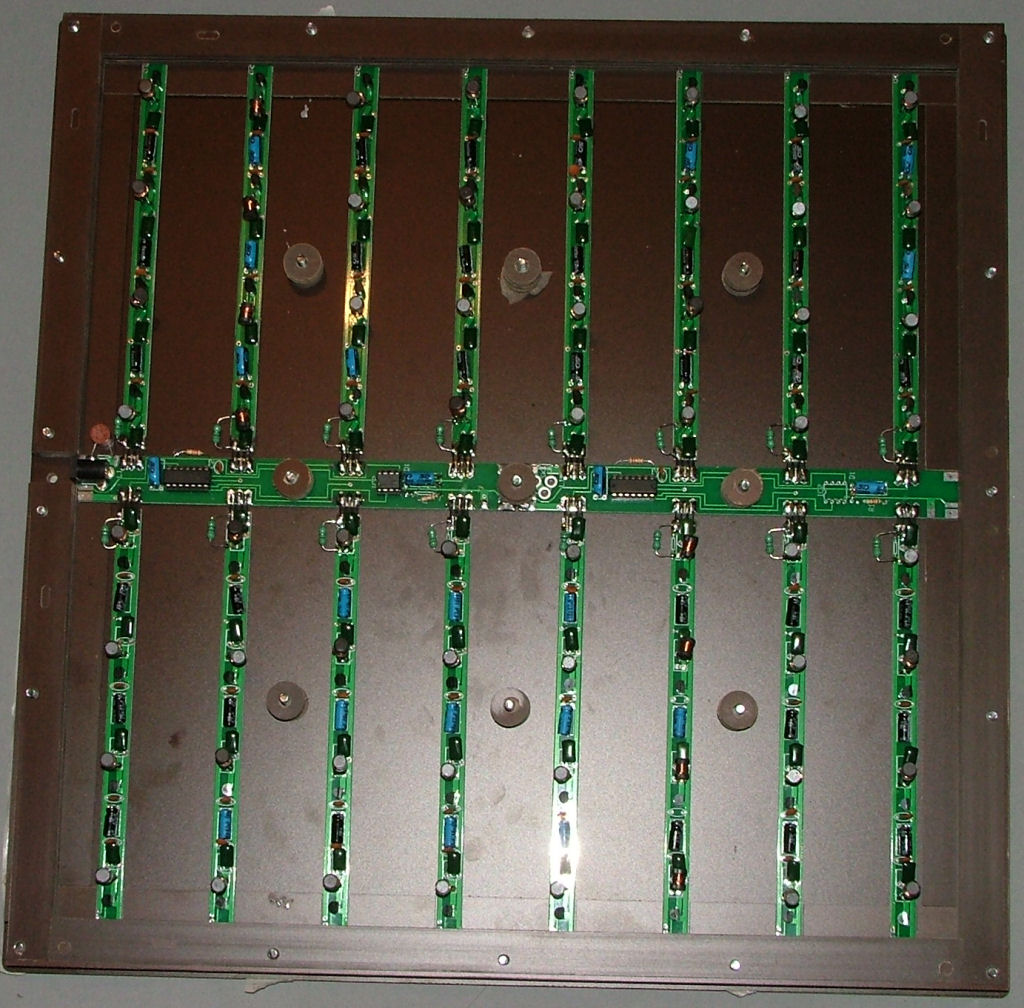Carefully push the coil frame sheet over the bolts:
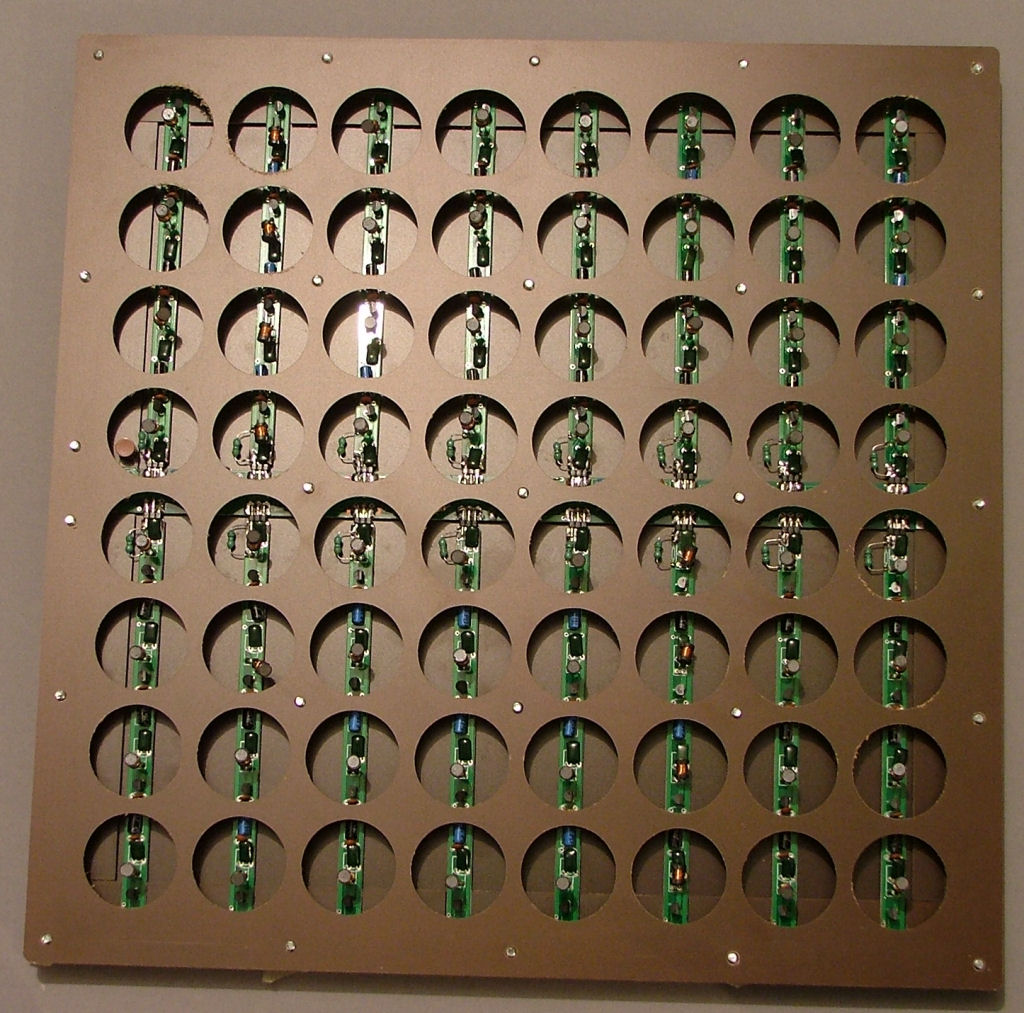
You now have the 'fun' job of carefully bending the coil leads so each coil is in the middle of its' hole and level with the top of the frame:
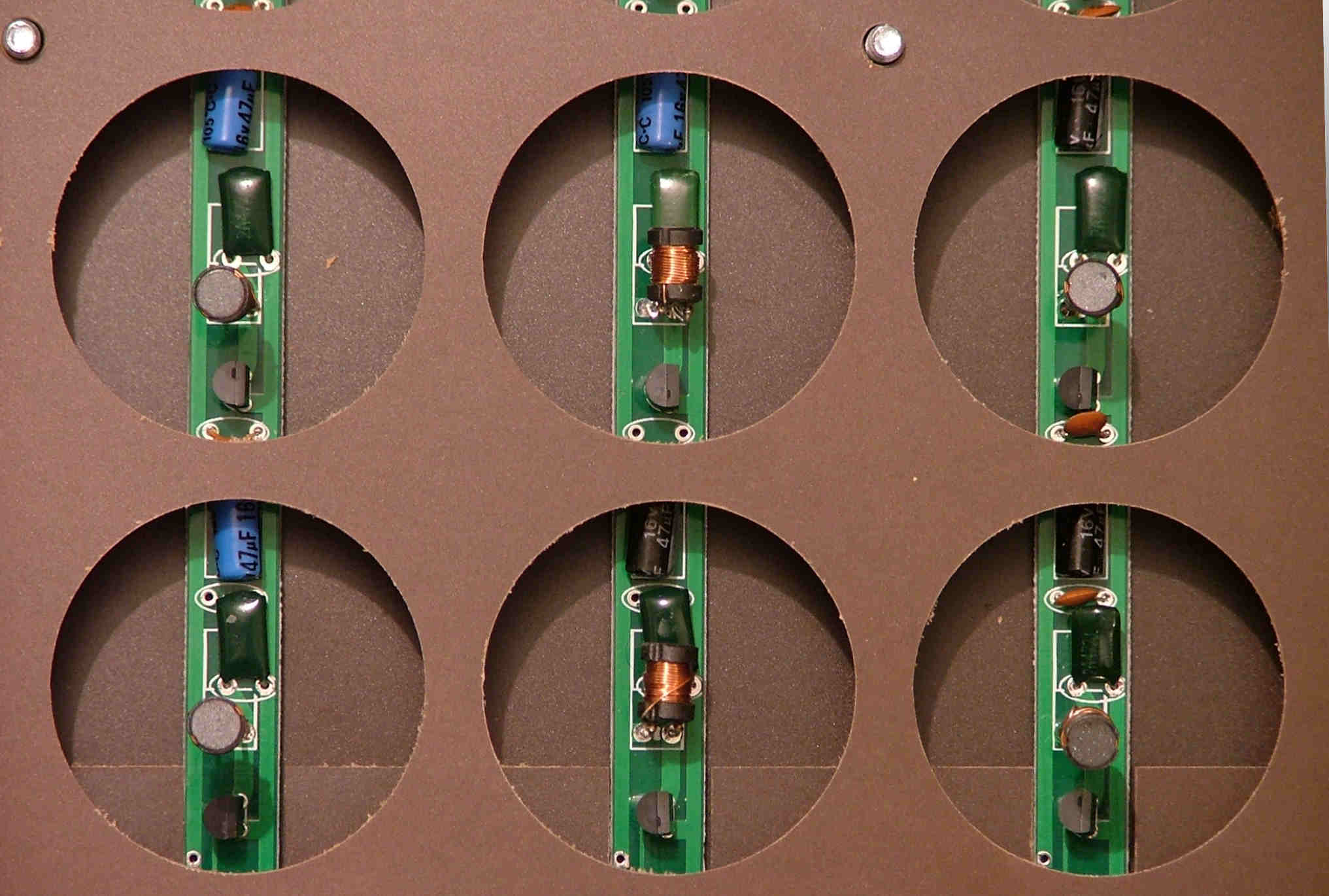
This will require quite a lot of patience and repetitive work. The effective diameter of these coils is much smaller than the hand wound or printed ones and the piece needs to be placed directly over it and you'll need to try the top on a few times until you have it lined up correctly.
Once you have the coils aligned I would recommend using some thin strips of double sided tape to hold the frame and top sheets together for final assembly or better, remove the frame and carefully glue it to the underside of the board top. This will provide the most rigid finish and prevent any warping of the thinner laminate.
Put a washer over each bolt and hold it all in place with a dome nut. There won't be much thread to 'bite' onto so you may need to compress the strips a little until it does catch. Thumb-tighten them and the board should now be rigid.
Final rigidity is provided by the bolts holding the stacks of strips around the edges, once tightened there should be very little flexing of the board.
